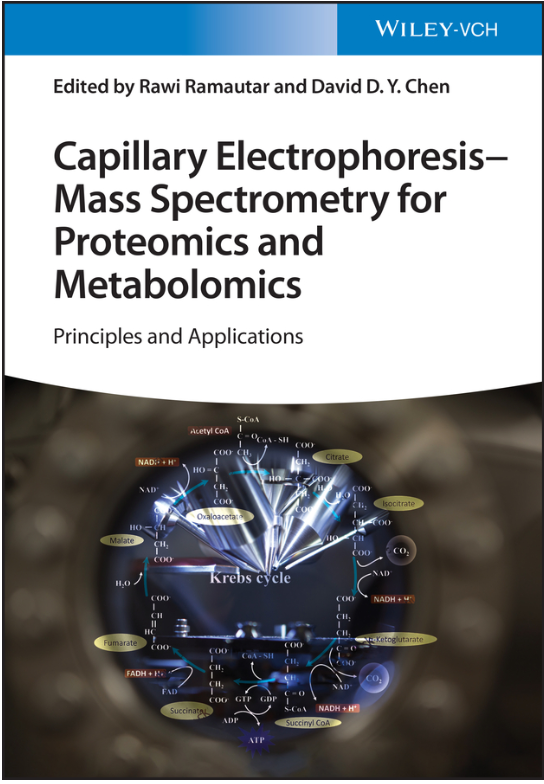Capillary Electrophoresis coupled with mass spectrometric detection is among the most powerful analytical tools in life science research. Incepted through basic research, described on these web pages, the technique was successfully introduced on the market by Hewlett-Packard (now Agilent Technologies) in the nineties. Their triple-tube sprayer has proven to be and still is the most robust, reliable, and easy-to-use interface, meeting user requirements in terms of separation resolution and sensitivity of detection. These benefits were obtained by using a sheath solvent which lifted the flow rate of the eluent, background electrolyte with the separate sample components, to a µL/min level.
The dilution of the separated sample bands through the mixing of the eluent with the sheath solvent by a factor of 10-50 is on the downside of this approach. So-called "sheathless" CE/MS interfaces have been developed since, e.g., the "porous tip interface," and introduced on the market by Beckman-Coulter (now Sciex). On the other hand, attempts to reduce the dimensions of sheath flow IFs and "liquid junction" type IF have become commercially available for research.
The big step in applying CE/MS has been in life science research (proteomics, metabolomics, lipidomics etc.) and the development of biopharmaceuticals (recombinant proteins and (conjugated) antibodies.) This is understandable while in research, exceedingly small sample volumes are available, and in QC of biopharmaceutical drugs, extensive tests are required for release. In addition, since modern CE/MS IFs work at a sub-µL/min volumetric flow rate, the sampling efficiency from the electrospray is more favorable, leading to lower detection limits.
This book is the right resource for users considering CE/MS for their entry into life science research, biopharmaceutical development, metabolomics, and lipidomics for understanding diseases and finding new leads for therapy. In 13 chapters, leading scientists deal fundamentals and application of CE/MS with electrospray ionization interfacing. In the first chapter, the Neusüss group at Aalen University of Applied Sciences describes and compares the different approaches of ESI CE/MS interfacing. In the next three chapters, relevant data handling is described by authors from Geneva University and the Chen group at the University of British Columbia, Canada. The next chapters deal with topics in metabolomics, lipidomics, peptidomics, and glycomics. All chapters are very comprehensive, with actual references. The authors are complimented for writing their chapter as a tutorial. The graphics in all chapters are superb. They are designed in an infographic style. They explain important aspects in each chapter clearly and understandably. This makes the book a monograph rather than an "Advances in....." book and is especially useful for graduate teaching in bioanalysis.
The editors of this book, Profs. David Chen, and Dr. Rawi Ramautar deserves a big compliment for managing the book style. This book is highly recommended.

